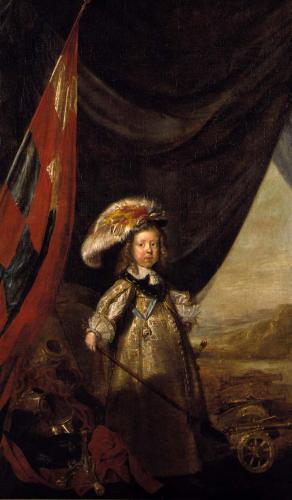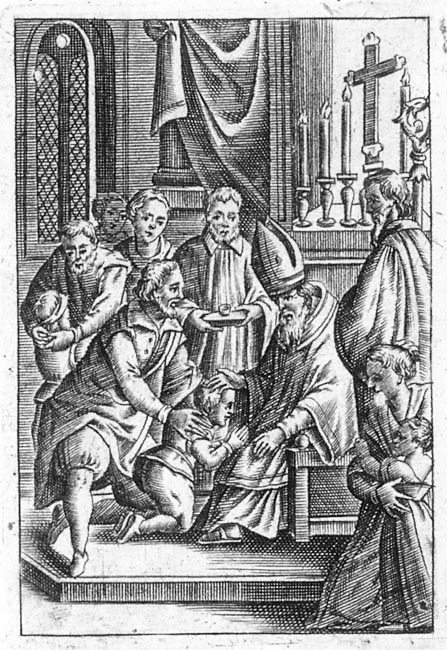|
Christian VI Of Denmark
Christian VI (30 November 1699 – 6 August 1746) was King of Denmark and Norway from 1730 to 1746. The eldest surviving son of Frederick IV of Denmark, Frederick IV and Louise of Mecklenburg-Güstrow, he is considered one of Denmark-Norway's more anonymous kings, but he was a skilled politician, best known for his authoritarian regime. He was the first king of the House of Oldenburg, Oldenburg dynasty to refrain from entering in any war. During his reign both compulsory confirmation (1736) and a public, nationwide school system (1739) were introduced. His chosen motto was "''Deo et populo''" (for God and the people). Early years Christian was born in the early hours of the morning on 30 November 1699 at Copenhagen Castle as the second but eldest surviving son of King Frederick IV of Denmark by his first consort, Louise of Mecklenburg-Güstrow. A former heir to the throne, also named Christian, had died in infancy in 1698, and as his grandfather King Christian V of Denmark, Ch ... [...More Info...] [...Related Items...] OR: [Wikipedia] [Google] [Baidu] |
Johann Salomon Wahl
Johann Salomon Wahl (1689, Chemnitz – 5 December 1765, Copenhagen) was a German artist who became a court painter in Denmark. Biography He trained as a painter between 1705 and 1711 with David Hoyer (1667–1720), the court painter in Leipzig. After that, he settled in Hamburg, where he worked as a portrait painter for the Duchy of Holstein, Holstein. In 1719, he was called to Denmark to work for the Danish royal family. When Christian VI of Denmark, Christian VI ascended the throne in 1730, Wahl was appointed as court painter. In 1737, he took over the administration of the National Gallery of Denmark, Royal Collection. In 1744, he became an honorary member of the Accademia di Belle Arti di Firenze. He was among the first Northern artists to apply the new French styles of portrait painting, emphasizing one's position in society rather than their personality, although his portraits of those outside the nobility tended to be freer in style. References * Altona Museum: ''Th ... [...More Info...] [...Related Items...] OR: [Wikipedia] [Google] [Baidu] |
Roskilde Cathedral
Roskilde Cathedral (), in the city of Roskilde on the island of Zealand (Denmark), Zealand (''Sjælland'') in eastern Denmark, is a cathedral of the Lutheranism, Lutheran Church of Denmark. The cathedral is one of the most important churches in Denmark, and the official royal burial church of the Danish monarchs. It is also a UNESCO World Heritage Site. This is due to two criteria: the architecture of the cathedral shows 800 years of European architectural styles, and it is one of the earliest examples in Scandinavia of a Gothic architecture, Gothic cathedral to be built in brick; it encouraged the spread of the Brick Gothic style throughout Northern Europe. Constructed during the 12th and 13th centuries, the cathedral incorporates both Gothic and Romanesque architecture, Romanesque architectural features in its design. The cathedral has been the main burial site for List of Danish monarchs, Danish monarchs since the 15th century. As such, it has been significantly extended and alt ... [...More Info...] [...Related Items...] OR: [Wikipedia] [Google] [Baidu] |
German Language
German (, ) is a West Germanic language in the Indo-European language family, mainly spoken in Western Europe, Western and Central Europe. It is the majority and Official language, official (or co-official) language in Germany, Austria, Switzerland, and Liechtenstein. It is also an official language of Luxembourg, German-speaking Community of Belgium, Belgium and the Italian autonomous province of South Tyrol, as well as a recognized national language in Namibia. There are also notable German-speaking communities in other parts of Europe, including: Poland (Upper Silesia), the Czech Republic (North Bohemia), Denmark (South Jutland County, North Schleswig), Slovakia (Krahule), Germans of Romania, Romania, Hungary (Sopron), and France (European Collectivity of Alsace, Alsace). Overseas, sizeable communities of German-speakers are found in the Americas. German is one of the global language system, major languages of the world, with nearly 80 million native speakers and over 130 mi ... [...More Info...] [...Related Items...] OR: [Wikipedia] [Google] [Baidu] |
Danish Language
Danish (, ; , ) is a North Germanic languages, North Germanic language from the Indo-European languages, Indo-European language family spoken by about six million people, principally in and around Denmark. Communities of Danish speakers are also found in Greenland, the Faroe Islands, and the northern Germany, German region of Southern Schleswig, where it has minority language status. Minor Danish-speaking communities are also found in Norway, Sweden, the United States, Canada, Brazil, and Argentina. Along with the other North Germanic languages, Danish is a descendant of Old Norse, the common language of the Germanic peoples who lived in Scandinavia during the Viking Age, Viking Era. Danish, together with Swedish, derives from the ''East Norse'' dialect group, while the Middle Norwegian language (before the influence of Danish) and Bokmål, Norwegian Bokmål are classified as ''West Norse'' along with Faroese language, Faroese and Icelandic language, Icelandic. A more recent c ... [...More Info...] [...Related Items...] OR: [Wikipedia] [Google] [Baidu] |
Confessor
In a number of Christian traditions, including Eastern Orthodoxy, Catholicism, Lutheranism and Anglicanism, a confessor is a priest who hears the confessions of penitents and pronounces absolution. History During the Diocletianic Persecution, a number of Christians had, under torture or threat thereof, weakened in their profession of the faith. When persecutions ceased under Constantine the Great, they wanted to be reunited with the church. It became the practice of the penitents to go to the Confessors, who had willingly suffered for the faith and survived, to plead their case and effect their restoration to communion. Over time, the word came to denote any priest who had been granted the authority to hear confessions. Historically, priests were sometimes tested by officers of the church called examiners, before being granted this authority. As spiritual advisor An individual may have a regular confessor, sometimes called a "spiritual advisor" or "spiritual fathe ... [...More Info...] [...Related Items...] OR: [Wikipedia] [Google] [Baidu] |
Crown Prince
A crown prince or hereditary prince is the heir apparent to the throne in a royal or imperial monarchy. The female form of the title, crown princess, is held by a woman who is heir apparent or is married to the heir apparent. ''Crown prince'' as a descriptive term has been used throughout history for the prince who is first-in-line to a throne and is expected to succeed (i.e. the heir apparent), barring any unforeseen future event preventing this. In certain monarchies, a more specific substantive title may be accorded and become associated with the position of heir apparent (e.g. Prince of Wales in the United Kingdom, Prince of Asturias in the Spain, Kingdom of Spain and formerly the Dauphin of France, Dauphin in Kingdom of France, France). In these monarchies, the term crown prince may be used less often than the substantive title (or never). Until the late twentieth century, no modern monarchy adopted a system whereby females would be guaranteed to succeed to the throne ... [...More Info...] [...Related Items...] OR: [Wikipedia] [Google] [Baidu] |
Christian V Of Denmark
Christian V (15 April 1646 – 25 August 1699) was King of Denmark and Norway from 1670 until his death in 1699. Well-regarded by the common people, he was the first king anointed at Frederiksborg Castle chapel as absolute monarch since the decree that institutionalized the supremacy of the king in Denmark-Norway. Christian fortified the absolutist system against the aristocracy by accelerating his father's practice of allowing both Holstein nobles and Danish and Norwegian commoners into state service. As king, he wanted to show his power as absolute monarch through architecture, and dreamed of a Danish Palace of Versailles, Versailles. He was the first to use the 1671 Throne Chair of Denmark, partly made for this purpose. His motto was: ''Pietate et Justitia'' (With piety and justice). Biography Early years Prince Christian was born on 15 April 1646 at Duborg Castle in the city of Flensburg, then located in the Duchy of Schleswig. He was the first legitimate child born to t ... [...More Info...] [...Related Items...] OR: [Wikipedia] [Google] [Baidu] |
Copenhagen Castle
Copenhagen Castle () was a castle on the islet of Slotsholmen in central Copenhagen, Denmark. It was built in the late 14th century and was located at the site of the current Christiansborg Palace. History In 1167, Bishop Absalon (c. 1128–1201) founded a fortress on the islet of Slotsholmen in the harbour of Copenhagen. It consisted of a courtyard with several buildings and surrounded by a wall for protection. During the years after the demolition of Bishop Absalon's Castle by the Hansa League in 1369, the ruins on the island were covered with earthworks, on which the new stronghold, Copenhagen Castle, was built. In 1343 King Valdemar Atterdag took over Absalon's castle, but upon his death in 1375 the right to the property returned to the Diocese of Roskilde. The castle had a curtain wall and was surrounded by a moat which had an inner diameter of about 50 meters and with a large, solid tower as an entrance gate. The castle was still the property of the Bishop of ... [...More Info...] [...Related Items...] OR: [Wikipedia] [Google] [Baidu] |
Confirmation
In Christian denominations that practice infant baptism, confirmation is seen as the sealing of the covenant (religion), covenant created in baptism. Those being confirmed are known as confirmands. The ceremony typically involves laying on of hands. Catholicism views Baptism as a sacrament. The sacrament is called chrismation in Eastern Christianity. In the East it takes place immediately after baptism; in the Western Christianity, West, when a child reaches the Age of reason (canon law), age of reason or early adolescence, or in the case of adult baptism immediately afterwards in the same ceremony. Among those Christians who practise confirmation during their teenage years, the practice may be perceived, secondarily, as a coming of age Rite of passage, rite. In many Protestantism, Protestant denominations, such as the Lutheran, Reformed tradition, Reformed, Anglican and Methodist traditions, confirmation is a Rite (Christianity), rite that often includes a profession of fai ... [...More Info...] [...Related Items...] OR: [Wikipedia] [Google] [Baidu] |
Norway
Norway, officially the Kingdom of Norway, is a Nordic countries, Nordic country located on the Scandinavian Peninsula in Northern Europe. The remote Arctic island of Jan Mayen and the archipelago of Svalbard also form part of the Kingdom of Norway. Bouvet Island, located in the Subantarctic, is a Dependencies of Norway, dependency, and not a part of the Kingdom; Norway also Territorial claims in Antarctica, claims the Antarctic territories of Peter I Island and Queen Maud Land. Norway has a population of 5.6 million. Its capital and largest city is Oslo. The country has a total area of . The country shares a long eastern border with Sweden, and is bordered by Finland and Russia to the northeast. Norway has an extensive coastline facing the Skagerrak strait, the North Atlantic Ocean, and the Barents Sea. The unified kingdom of Norway was established in 872 as a merger of Petty kingdoms of Norway, petty kingdoms and has existed continuously for years. From 1537 to 1814, Norway ... [...More Info...] [...Related Items...] OR: [Wikipedia] [Google] [Baidu] |







